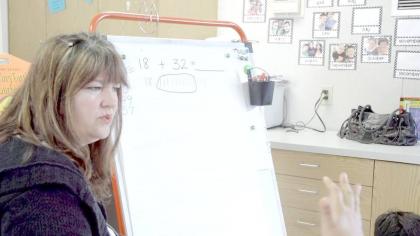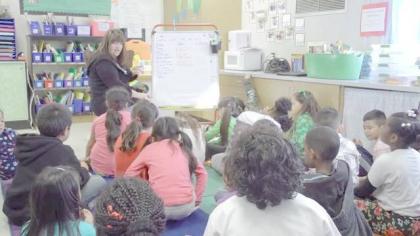Overview
This lesson makes use of “mentor problems” to help students identify and connect mathematical concepts within quantitative problem-solving situations. Mia Buljan relates the concepts to experiences from students’ lives—in this case, a “put-together” problem is called “Diva’s Stickers,” named for one of the students and capitalizing on their interest in collecting stickers.
Early in the year, Mia had introduced this situation: “Diva has ___ stickers. She then goes to the store and gets ___ more. How many stickers does Diva have now?” In this lesson, Mia uses the students’ prior experience with this problem to help them identify and distinguish “put-together” problems from “take-apart” problems.
The students have the opportunity to:
- Defend their thinking to their teacher and classmates.
- Engage in productive struggle.
- Use appropriate tools.
- Look for and identify mathematical structures.
After viewing this lesson, teachers should understand the usefulness of mentor problems to create a space where students can try strategies and think about which numbers work best with which strategies.
Mia notes that before she started using mentor problems, “If a student was counting on their fingers in September, they were still counting on their fingers in May.” By sticking with one problem, Mia has given students the cognitive space to experiment with and compare strategies and to be more efficient in their mathematical problem solving.
Mia has taught mathematics at Glassbrook Elementary in Hayward, California, for many years. At the time of this recording, in 2015, the student population at Glassbrook was predominantly Latino (86%), African American (5%), and Asian (3%); the majority of students were documented as socioeconomically disadvantaged (92%) and English language learners (70%).
show more












